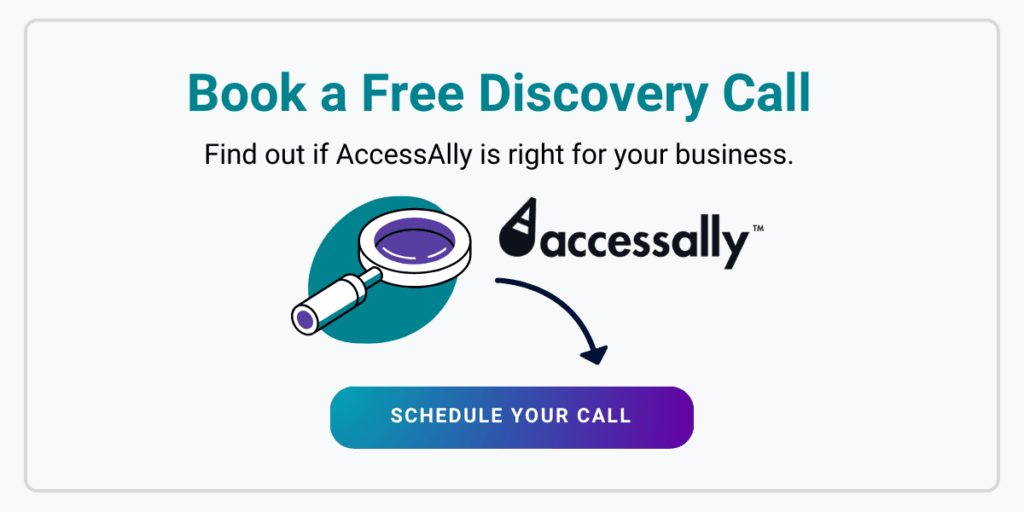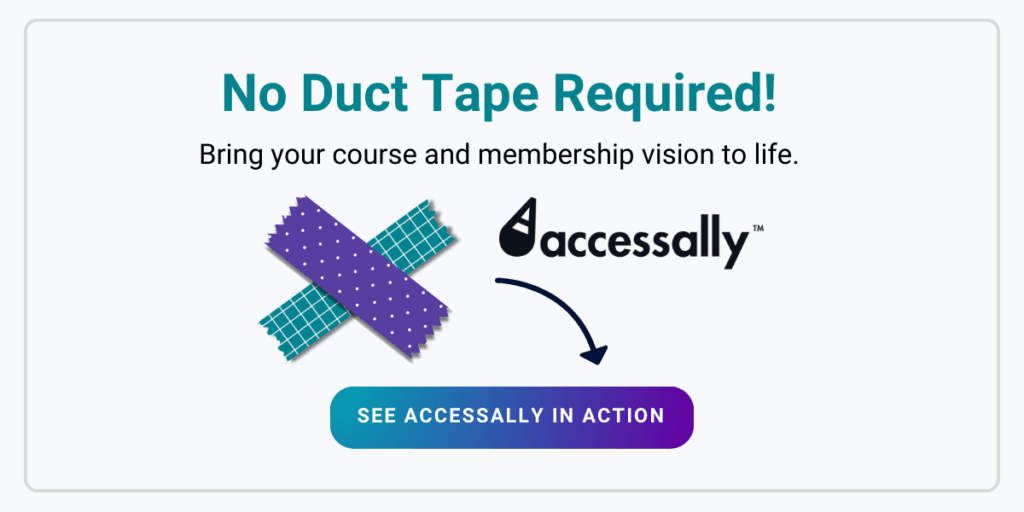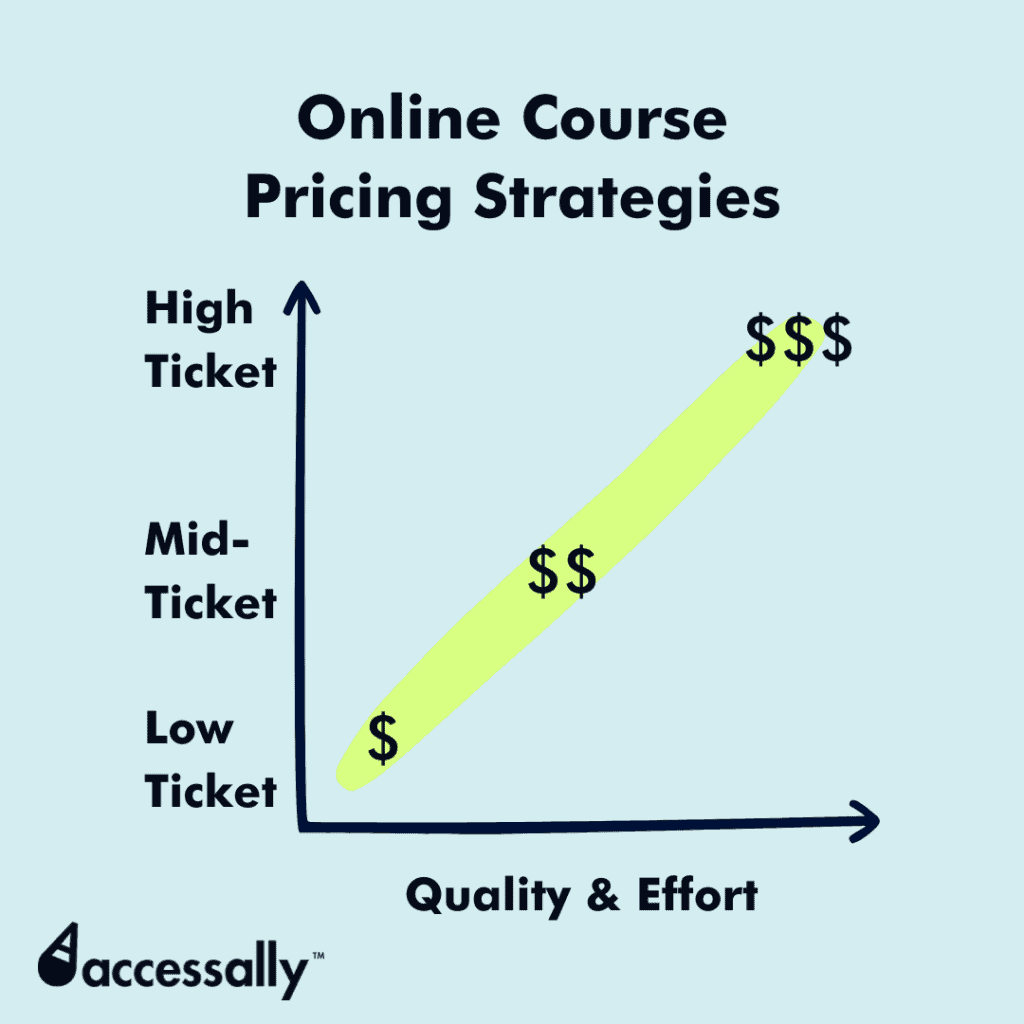There are many steps in creating an online course from choosing your online course platform to selling and marketing your course, and pricing is a key step in the process as it has a big impact on course profitability and reflects on overall course value.
For beginners, this important decision can seem overwhelming; it’s hard to put a price on your expertise, and the common advice to “charge what you’re worth” doesn’t give you much to go on.
If you’re feeling lost, you’ve come to the right place, as this article will:
- Explain key factors that influence course pricing
- Introduce pricing strategies
- Explain when and how to raise your prices effectively.
Why Pricing Matters For Online Courses
Setting your pricing is a pivotal decision when you sell courses online. Here are some important ways it has an impact.
Revenue Generation
Obviously, the main consideration is how your course will affect your revenue. The price you set directly determines the total revenue your course can generate.
A higher price can lead to greater income potential; but a lower price might require a large sales volume to meet your financial goals.
In addition, you need to carefully consider the costs associated with course creation and ensure that your pricing allows you to make a profit.
Perceived Value
The pricing you set also sends a message about the value of your courses. It can subconsciously send a message to potential students about the quality of your course content and your own expertise and experience.
A higher price point could indicate a premium quality course with major benefits for students. Offering the exact same course for a very low price might cause potential students to question how valuable it is.
A well-priced course acknowledges the time, effort, and knowledge invested in creating high-quality content.


Setting Your Online Course Prices
There’s no one-size-fits-all answer when it comes to pricing your online courses. Many factors will affect how much you can charge, and in this section we’ll explore some of the most important factors.
Understanding Your Online Course’s Value
In order to price your course, you must start by understanding its value. The true value of your course hinges on the benefits students will get out of completing it.
Online courses (as opposed to in-person) offer inherent value to students, including:
- Convenience: Flexible learning fits around busy schedules.
- Accessibility: Learn anytime, anywhere (no commute!)
- Wider course variety: Online platforms can host a broader range of courses compared to physical limitations of a classroom.
- Cater to diverse learning styles: Online courses can incorporate multimedia elements (video, audio, text) to cater to different learning preferences.
- Support: Easier to provide 1:1 online support.
- Asynchronous communication options: Students can ask questions and receive answers on their own schedule.
- Online communities: Foster peer-to-peer learning and interaction.
- Effectiveness: Increased information retention
- Self-paced learning: Students can progress through material at their own speed, revisiting sections as needed.
- Personalized learning paths: Online platforms can adapt to individual learning needs and suggest relevant content.
- Better retention rates: According to Oxford Learning College, e-learning increases information retention rates by up to 60%
Beyond these inherent benefits, you must consider the specific transformation your course offers to students.
Identify the specific, measurable results you are offering (e.g. increased income potential, time saved, etc.). For example, if your course will allow a student to add $5,000 a month to their take-home pay, then a course cost of $2,000 is a fraction of the total future benefit.
Students will view your course as an investment in their future, and the price you set should reflect the tangible benefits they can expect.
Other Key Pricing Factors
Beyond students’ end transformations, there are some other important factors to take into consideration.
Your Expertise and Credibility
Your personal expertise and credibility will make a huge difference in how much you can charge for your courses.
Take into account any certifications you may hold and your years of experience on the subject. Experts can command higher prices due to the value of their knowledge.
Market Demand
In pricing your course, you must research the market demand to understand your competitors and potential customer base.
If the market is already over-saturated with courses on your topic, it may be difficult to get students to pay higher prices unless you can differentiate your course from the competition.
On the other hand, if your course topic is niche or there is particular demand, you will be able to command higher pricing.
Production Costs
One advantage online course creators have over those who teach in-person courses is the reduced costs associated with teaching online.
You won’t need to dedicate any of your budget to things like classroom hire, travel costs, or physical course materials like workbooks.
That said, depending on the type of course you want to run, you may still require supplementary materials that are not readily available online.
If you need to create videos, audio, PowerPoint presentations, podcasts, or hire subject matter experts, it will cost you money. For example, a cooking or craft class might require filming demonstrations, whereas a writing course might not.
In addition, you’ll want to factor in costs associated with technology needed to deliver your course, like your online course platform fees, costs for email services and other marketing expenses, and other associated costs like licensing images or music.
When setting your price, you’ll need to weigh up the costs associated with creating your course content against how you plan to sell your courses to ensure you can make the enterprise profitable.
Course Content Quality
The quality of your course materials will likely go hand in hand with your production costs. Creating high-production value video or audio content will incur costs, but you will be able to price your course higher.
High-quality content, including well-produced videos, informative presentations, and engaging materials all contribute to a course’s perceived value, but you must balance the costs with the profitability of your course.


Online Course Pricing Strategies
Instead of just choosing a price out of thin air or setting your pricing based on your competitors, you want to base your course on the value you deliver and how your audience perceives it.
It can be challenging to understand how much you should actually charge and what the consequences could be of different pricing strategies.
In this section, we will look at three different pricing strategies: low-cost, mid-cost, and high-cost, analyzing their price ranges, key considerations, advantages, and drawbacks.


Low-Cost (Under $99)
Anything under $99 is considered low-cost in the online world. You might even argue that $199 or less is also low cost, but of course, everyone has a different opinion and relationship to prices.
Think back to what other alternatives people have tried before buying your online course.
It’s possible that they’ve tried free things like listening to YouTube videos or reading blog posts.
They may have bought books or attended seminars. These options may be considered low-cost or low-priced, and you can start to build a case for how your lower-priced course is worth it.
When it comes to choosing a low price point, think about where this course fits on your customer journey.
Is this a mini course that they will take before enrolling in a longer-term membership program?
Is this a course that you will offer year-round, with instant gratification if someone decides to sign up? This is called an evergreen course, and it’s a great way to satisfy people who just discover you and want their problems addressed immediately.
Also, think about the potential volume of people going through this course.
Do you have a large enough audience to support this business model?
If you’re just starting out, and this is your first online course I recommend that you DON’T price low.
It will take too long for you to get profitable.
If you have an established target audience of say 5000 people on an email list, then you could offer a lower-priced program and get a nice bump in income.
But in my experience, it takes just as much time to create a low-cost product and market it, as it does to create a mid or high-end program.
So why not charge more and get a better return on your efforts?
Mid-Cost ($100-$500)
This is where the majority of people price their online courses. It’s most comfortable to charge between $100 and $500 for an online course.
You’ll earn a bit more per sign-up, which means you don’t need as big of an audience and you can still turn a profit on your own course quickly.
The stakes don’t feel as high for your students, but this could turn out to be a bad thing…
If your students and customers enroll but don’t feel motivated enough to engage with your course, then you’ve lost the chance to help someone reach their goals or solve their problems.
The reason people sign up for online courses is that they want the promise or the transformation.
If they haven’t invested too much into your course, they’re more likely to get sidetracked and fall back into the routine of their lives, not bothering to fully engage with the complete course.
That means they won’t become a raving fan, they won’t write you a glowing testimonial, and they won’t tell your friends about how awesome your course was.
So it’s super important to know going in that choosing a mid-tier price for your course might be harder long term.
Again, think about where this course sits in your customer journey.
Is this a course people take before they enroll in a private session with you? Is this something they can sign up for as an existing member of a subscription program?
This will help you decide on your pricing, too. Along with comparing what alternatives there are (out of other online courses).
These considerations can make the difference between whether or not you get more customers to invest in your online course.
High Ticket ($500+)
If you’re getting started or you have an existing mid-tier course but it just isn’t getting the results for your clients or selling consistently…
Offering a higher-level course that comes with more access to you might be just the ticket.
High-end paid courses could cost anywhere from $500 to even $5,000 or $10,000.
How you deliver your course is where you can start to see how we can justify these prices.
Some people call courses that offer a lot of facilitation and community “hybrid courses.” They’re also called high ticket offers, masterminds, and coaching programs.
How you decide to approach yours will dictate how you price. You will also want to think about the context of your niche and business, too.
If you are selling to people trying to get out of debt and the course topic is how to be responsible with money, then this type of online course pricing might not be a fit.
Similarly, if you’re teaching people how to eat well but your target audience has a hard time affording healthy food in the first place, this pricing model won’t work.
But if you are offering something that will have a material impact on people’s finances or lives, then high ticket offers work well. This tends to be the case for things like sales training, investment advice, marriage and relationship advice, and other “big life” areas.
When Can You Raise Your Online Course Prices?
As you’re setting your prices the first time around, keep in mind that you can always adjust your pricing down the line.
We recommend reevaluating your pricing every 6–12 months to ensure the price matches the value you are providing. Let’s take a look at some indicators that you should increase your pricing.
Your Margins Are Too Low
When evaluating your existing pricing, one of the key factors to consider is what your margins look like.
Your margins need to be large enough to give you the ability to spend your time supporting your members, hire more staff, and give you the ability to continually reinvest in your business.
If your margins get too low, the overall satisfaction that your members are getting from your online course will start to decline.
You Have Increased the Course Value
If you have increased the overall course value in some way since initial pricing, you have grounds to raise your prices.
This could look like:
- Adding course content
- Improving existing content (added visuals or information, better production quality)
- Introduced new support channels (communities, Q&A sessions) or access
You Are Getting Tons of Positive Feedback
If you’re hearing lots of positive feedback from course participants, that’s a great sign! And a good indicator that it’s time to raise your prices.
Receiving positive feedback from course participants means the perceived value is high! It means that course participants are happy with what they’re receiving. It means that your marketing message matches what they’re receiving in the course. These are all fantastic signs! Great job!
To keep providing this level of value, you’ll need to increase your prices to maintain it. If you want to reach more people and have a bigger impact, then you have to charge for it.
With lots of positive feedback, you’ll be able to gather testimonials, success stories, and/or data that showcases positive student outcomes that will allow you to strengthen the offer on your course landing page.
Raising Your Online Course Prices: Strategies for Success
Once you’ve identified that it’s time to increase your online course pricing, it’s important to go about it the right way.
Transparency is key; clearly communicate the reasons behind the price increase and the additional value students will receive. In fact, raising your prices can even be a great marketing opportunity.
Here’s your roadmap for navigating the process effectively:
1. Communicate and Justify the Pricing Increase
When raising prices, you want to be sure to:
- Clearly explain the improvements you’ve made to the course since initial pricing
- Communicate the benefits of the higher price point (additional resources, support, etc.).
It’s important to get the word out by: Updating your sales page and marketing materials with the new pricing and informing existing students directly with personalized emails.
Through your communications, make sure to proactively address any concerns students may have regarding the pricing adjustment.
2. Create a Pre-Launch Buzz
Now, you could just update the price on your website and call it a day. That’s one strategy.
There’s a better way though! It’s more beneficial to make it an exciting marketing event. With this strategy, you’ll create a buzz around the price increase, and scoop up people who’ve been on the fence.
You can let people on your email list know that the price is going up on a specific date. Let them know that if they want to get in at the current price, they have to join now before the price goes up for good.
If you use social media marketing, dive in on the various platforms and create posts about the price increase.
3. Build Long-Term Value
To maintain your course’s relevance and high quality over time, it’s important to continuously improve your course by regularly updating content and addressing student feedback and provide ongoing assistance to students, addressing their inquiries promptly, and actively engaging with the learning community.
It’s crucial to focus on building trust and exceeding expectations: Deliver exceptional quality, provide ongoing support, and consistently demonstrate the course’s transformative potential.



